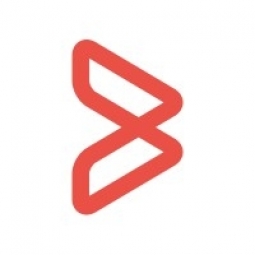Customer Company Size
Large Corporate
Region
- America
Country
- United States
Product
- Compuware ISPW
- Topaz
Tech Stack
- DB2
- VSAM
Implementation Scale
- Enterprise-wide Deployment
Impact Metrics
- Productivity Improvements
- Digital Expertise
Technology Category
- Platform as a Service (PaaS) - Application Development Platforms
Applicable Industries
- Telecommunications
Services
- Software Design & Engineering Services
About The Customer
The company provides mainframe-based software applications and solutions support for companies that deliver digitized communications services to businesses and individuals. Their solutions include service management (e.g. moves/adds/changes), billing, service acquisition, customer relationship management, etc. Their customers provide a wide range of digital services to commercial, service and production companies across all of North America – Canada and the US. The company is provided with IT outsourcing and managed services from a premier provider. The software development group is responsible for managing the software used by operations to provide services. The computing environment consists of four (4) major LPARS; three (3) are production LPARS and one (1) development LPAR. Multiple software production databases are maintained for their different customers. The parameters and software code used to provide services evolve, change, converge and diverge according to customer demands and activities.
The Challenge
The company, a major communications industry service provider located in the United States, was struggling with Source Code Management (SCM). Their existing mainframe code management tools were outdated and could not keep up with the pace of change in today's world of agile development and rapid programming styles. The in-house developed SCM processes were inefficient and inconsistent, resulting in unnecessary errors. Deployments would slip out without all of the correct software changes and updates incorporated. Old and new versions of software were being deployed in error. There wasn’t a standardized way to implement changes. Procedures for version control and verification processes were not standardized. As a result, ‘clean-up’ of existing libraries was inconsistent, so that old versions of software would remain in ‘updated’ libraries. Changes could be made at any level making auditing, repeatability and traceability difficult.
The Solution
The company chose Compuware ISPW for their SCM solution. ISPW uses a totally different approach from their current solution. So, choosing it meant they would undergo a fundamental, significant change to the existing culture. Therefore, they prepared for the migration with a detailed project plan which included significant ISPW support. The company attributed much of the success of its smooth implementation to the fact that they spent roughly 10 months researching and learning about the product with ISPW staff. They had to rethink how they did things and learn how to do what needed to be done with ISPW. Being a services provider, they also expected to have to create a number of new complex processes to modify ISPW for use in their multi-customer environment. This meant they undertook extensive planning and engineering of new processes to be created.
Operational Impact
Quantitative Benefit

Case Study missing?
Start adding your own!
Register with your work email and create a new case study profile for your business.
Related Case Studies.

Case Study
Vodafone Hosted On AWS
Vodafone found that traffic for the applications peak during the four-month period when the international cricket season is at its height in Australia. During the 2011/2012 cricket season, 700,000 consumers downloaded the Cricket Live Australia application. Vodafone needed to be able to meet customer demand, but didn’t want to invest in additional resources that would be underutilized during cricket’s off-season.

Case Study
SKT, Construction of Smart Office Environment
SK T-Tower is the headquarters of SK Telecom. Inside the building, different types of mobile devices, such as laptops, smartphones and tablets, are in use, and with the increase in WLAN traffic and the use of quality multimedia data, the volume of wireless data sees an explosive growth. Users want limitless Internet access in various places in addition to designated areas.











